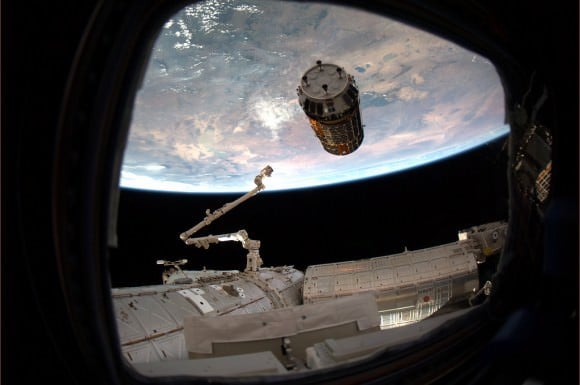[/caption]
Japan's HTV-2 Kounotori resupply ship undocked from the International Space Station at 15.45 GMT on March 28, and will burn up in Earth's atmosphere sometime early Wednesday March 31. Back in January, the craft brought five metric tons of equipment and supplies to the station, but now it is loaded with trash and unneeded equipment and packing materials. Most of the HTV will likely disintegrate as it passes through the atmosphere, but any pieces left over will find a watery grave in a remote area in the Central Pacific. But sensors on board the HTV-2 will provide data on how the craft behaves during its fiery demise.
The Re-entry Breakup Recorder (REBR) will record temperature, acceleration, rotational rate and other data.
The second HTV from Japan arrived at the ISS on January 27 carrying its cargo of food, water supplies, and equipment. Japan expects to send another seven cargo ships to the station by 2015, with the next one scheduled to arrive in January 2012.
The ISS crew grappled HTV-2 with the Canadarm 2, undocked it from the station and then maneuvered the HTV into a release position about 30 feet below the station. The Space Station Integration and Promotion Center in Tsukuba, Japan was able to handle the commands to activate and check out the freighter's guidance, navigation and control systems. Because of the March 11 earthquake in Japan, controls of the HTV and Japan's Kibo laboratory was temporarily handed over to NASA in Houston, but the center is now fully restored for full commanding, telemetry and voice capabilities for the ISS.
The cargo ship will enter the atmosphere on Wednesday at 03.09 GMT, and any remaining fragments will fall into the Pacific Ocean 31 minutes later.
So long Konotori, and we thank you.
 Universe Today
Universe Today
